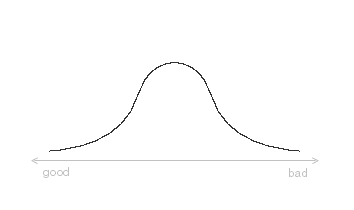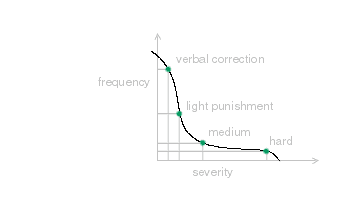Finding balance
This chapter is on how parents can balance reward and punishment, and the various degrees of punishment, in a way that is fair, appropriate and effective.
Human behavior can be roughly represented by a bell curve. Individual acts of behavior range from the very good to the very bad, but the probability of the extremes will usually be much lower than the probability of the middle (neutral) ground.

Generally, the more severe an offense is, the higher the punishment should be. From the shape of the bell curve you can see that minor offenses will be much more frequent than major offenses. Consequently, light punishments should be much more frequent than harder punishments.
The spectrum of punishments available for parents ranges from verbal correction (scolding) to time-outs, corner time, restriction, extra chores, removal of privileges, etc. etc., up to corporal punishment (spankings). Spankings are typically used for the most serious of offenses, so to correspond with the bell curve of bahavior, spankings should be pretty unfrequent events, compared to milder consequences.

- 4 verbal corrections for 1 light punishment
- 4 light punishments for 1 medium punishment
- 4 medium punishments for 1 hard punishment
Last update: Aug-31-2004
